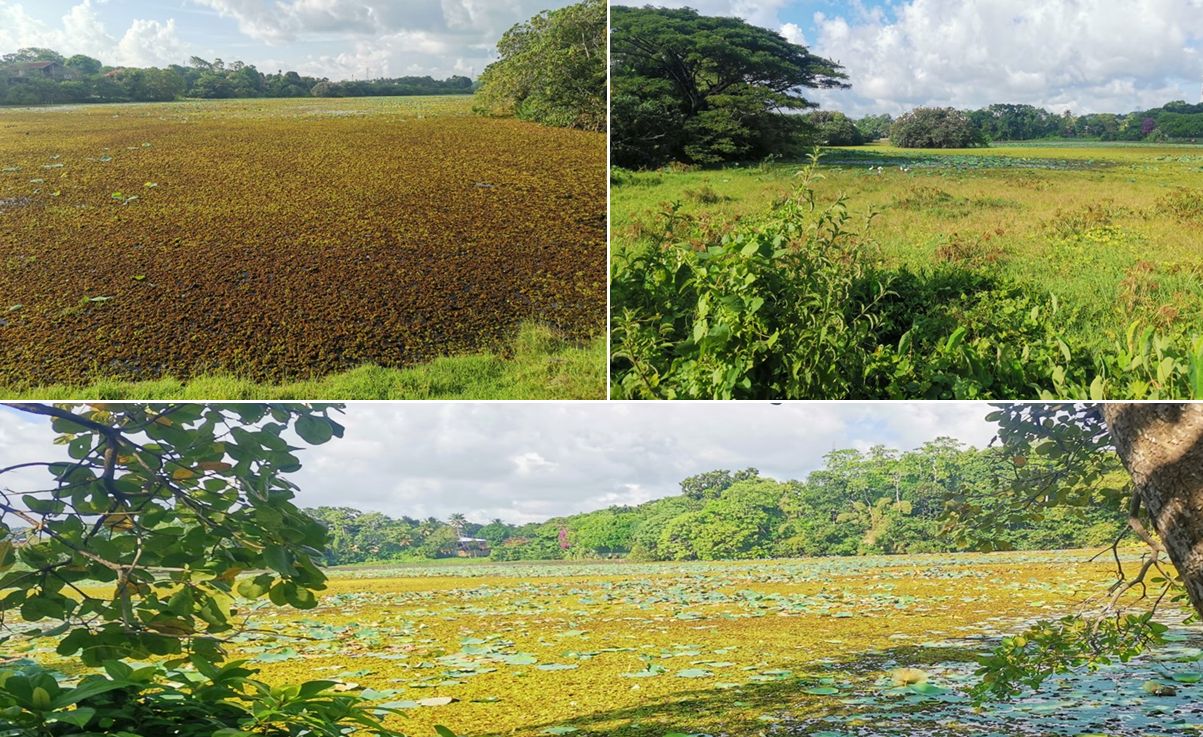Supported by nutrient rich water
INVASIVE PLANTS COVERING THE LAKE
- The growth of invasive plant species is supported by nutrient rich water entering the lake from households, upstream farms, and livestock, which leads to eutrophication.
- Even where we still see ‘water’, there are submerged plants under the surface making any swimming, flower collection or paddling difficult. While some birds appreciate the floating carpet of leaves, others miss the open water. More important is that any dying vegetation that decomposes in the lake consumes in this process dissolved oxygen, while the carpet of living leaves prevents turbulence and fresh air supply to replenish the lake with oxygen. As a result the dissolved oxygen levels are decreasing and only allow a few species of, for example, fish to breathe.
- Some of the water plants, like the free floating salvinia are in general less a problem as they are washed out of the lake during heavy rains. And the spread of Water hyacinths we are manually controlling. What we can’t control is the growth of grass which has a very heavy (floating) root mass which is difficult to remove manually. Another challenge is posed by the beloved Water Lily. While its flower and leave swim on the lake surface, its stem is rooted in the lake bed. This keeps the plant ‘stationary’ and a large number of water lilies considerably slows down or prevents the movement of normally free-floating plants, like salvinia, even under heavy rains. However, as the leaves and flowers are of commercial and religious interest, it is not easy to argue even for a partial removal.
- With the help of our workers, we pushed a large carpet of plants (including grass) over the spill-over of the Thalangama lake allowing the heavy rains to move the remaining salvinia cover to the now open area and eventually also down to the Averihena lake. Due to the frequency of heavy rains in Sept/Nov 2023, the Thalangama lake opened up and showed again a significant water surface, while the small Averihena lake (which has a blocked outflow direction Kelani river) suffocated under the incoming plants. The Dec 2023 update on our activities shows how we tried to address this challenge.
